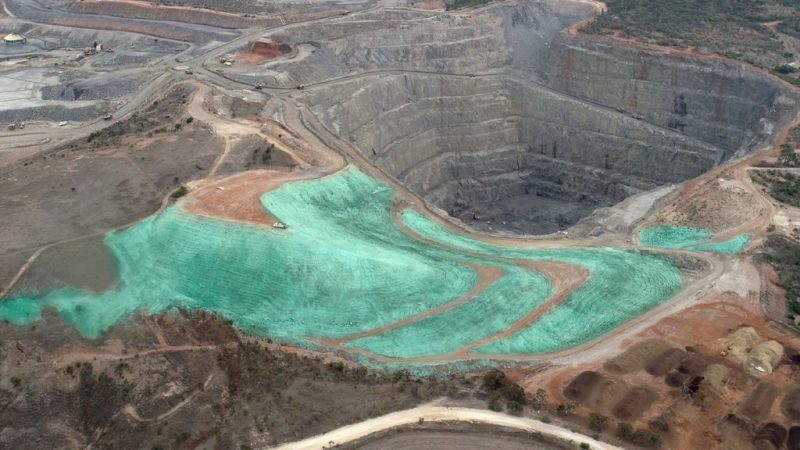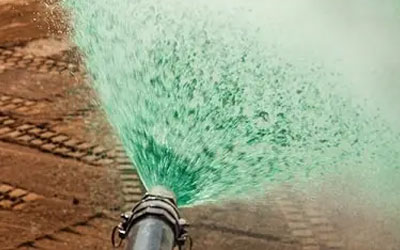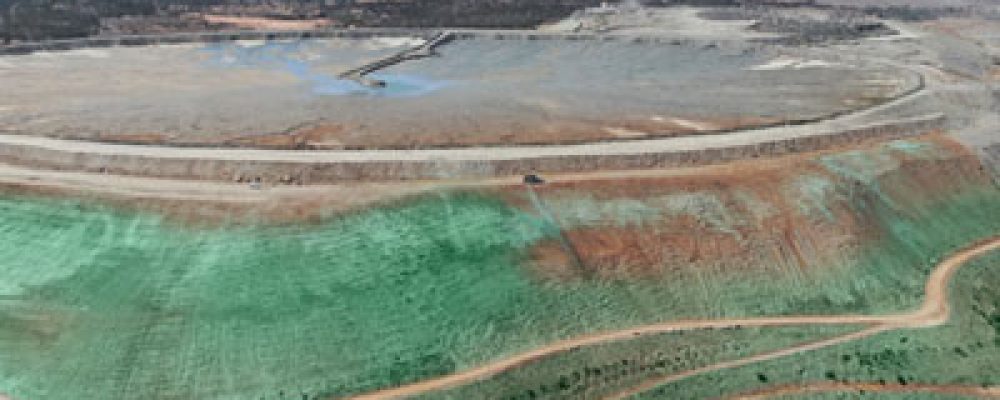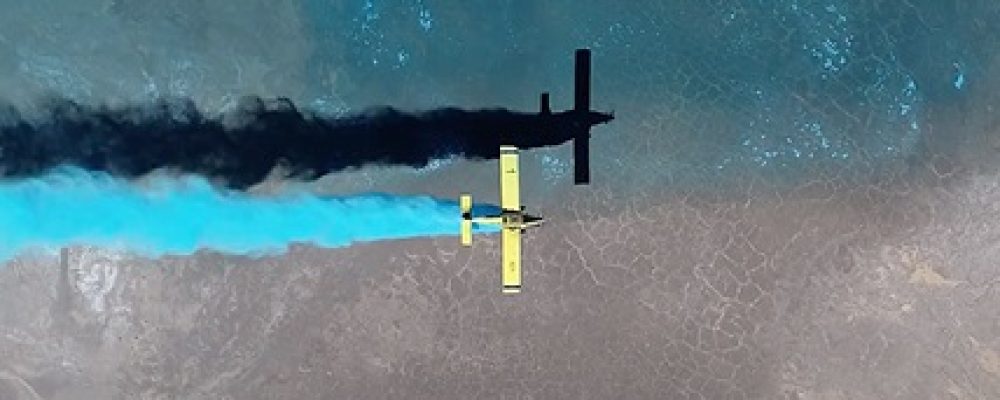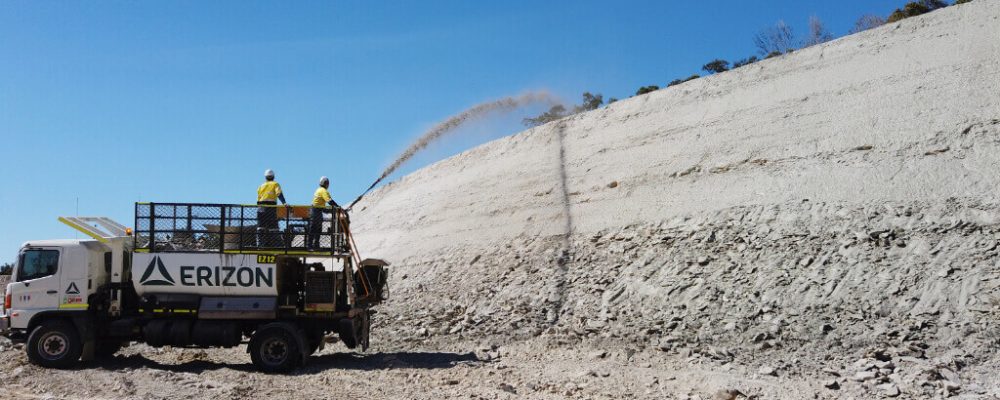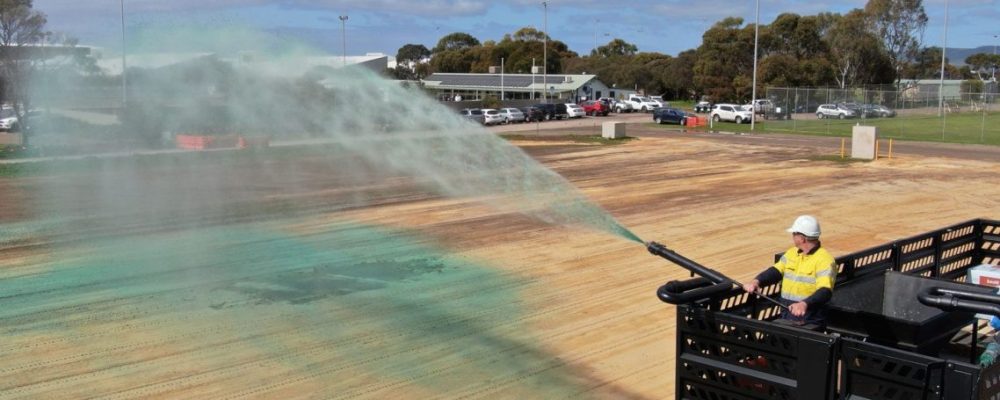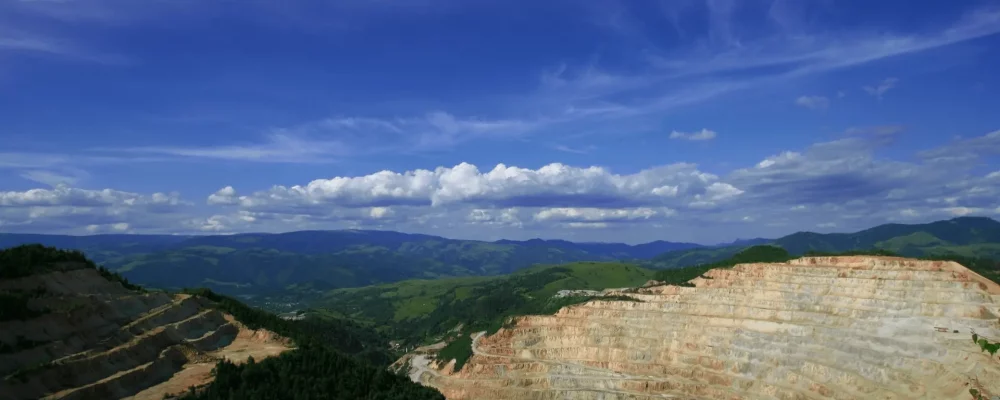Choosing the right dust suppression solution is important for industries such as mining, construction and agriculture, where dust is a constant challenge. With advancements in technology, a variety of innovative solutions have emerged, offering effective and sustainable means to control dust.
Whether you’re dealing with airborne particles at a construction site, managing tailings in mining operations, or seeking to minimise soil erosion in agricultural fields, understanding the key considerations in selecting an appropriate dust suppression method is critical. This discussion aims to lay the groundwork for identifying the most efficient and environmentally friendly ways to manage dust in various industrial contexts.
The Dust Suppression Challenge in Australia
Australia’s vast landscapes and diverse climatic conditions present a multifaceted challenge in dust suppression. The arid and semi-arid regions, which cover a significant portion of the continent, are predisposed to high levels of dust generation.
Additionally, environmental regulations in Australia mandate the use of sustainable and non-toxic dust suppression solutions, pushing industries to seek innovative and environmentally friendly alternatives that satisfy both regulatory and operational demands.
This complex interplay of geographic, climatic and regulatory factors underscores the challenge of dust suppression in Australia, requiring a tailored approach that adapts to the specific needs of each site and its surrounding ecosystem.
The Importance of Effective Dust Suppression
Effective dust suppression plays a critical role in ensuring the operational efficiency of industries. Here are some key reasons why dust control should be a priority for any business:
- Mining: Dust control measures in the mining industry are crucial to ensure the safety and health of workers. By effectively managing dust, mining companies can also maintain operational efficiency and prolong the lifespan of their equipment. Techniques such as dust suppression misting systems are often employed for this purpose, making the mining environment safer and more productive.
- Construction: To safeguard the well-being of construction workers and the surrounding community, dust control is key. Measures like dust screens and water mist systems can significantly reduce dust levels, contributing to a healthier and more efficient work environment.
- Roadworks and transport: During road construction and maintenance, effective dust control is essential to protect public health and limit environmental impact. Techniques such as applying dust suppressants can help bind dust particles and prevent them from becoming airborne, ensuring smooth and safe transport operations.
- Energy: In areas like coal handling and processing, dust control is critical not only for protecting workers’ health but also for enhancing equipment longevity. Dust collection systems and regular maintenance routines can play a significant role in effective dust management.
- Defence: For the defence sector, especially at training grounds and vehicle testing areas, dust control is a critical aspect of ensuring safety and operational efficiency. The use of dust control agents can significantly reduce dust levels, providing optimal conditions for training and testing.
Mechanism of Dust Suppression: Understanding How It Works
Dust suppression is a crucial method to control dust particles that are released during various industrial activities. The primary objective of dust suppression is to limit the amount of dust that escapes into the atmosphere, thereby reducing its harmful effects on human health and the environment.
This technique involves applying water or other dust suppressants onto materials that generate dust. There are several methods to achieve this, including dust collection, wet dust suppression and airborne dust capture.
The mechanism of dust suppression can be divided into wetting, moisturising, bonding and composite effects. Wetting involves applying a liquid, usually water, to dampen the dust. Moisturizing keeps the dust damp over a longer period, preventing it from becoming airborne. Bonding involves using a substance that binds dust particles together, preventing them from being dispersed by wind or movement.
Composite effects involve combining these techniques for more effective dust control. Some systems also use surfactants, which are substances that lower the surface tension of a liquid, allowing it to spread more easily. Surfactants can enhance the dust suppression process by enabling the liquid to better penetrate and coat the dust particles.
Each method has its own advantages and can be chosen based on the nature of the dust produced, the scale of operation and specific site requirements.
Factors Influencing Dust Suppression Effectiveness
The effectiveness of dust suppression techniques can be influenced by numerous factors. Understanding these factors can help optimise dust control strategies and ensure that they are both efficient and environmentally friendly.
Environmental Factors
Environmental factors can greatly impact the effectiveness of dust suppression. Factors such as wind speed and direction, humidity, temperature and rainfall can all influence how well dust is controlled.
For example, high wind speeds can disperse dust more widely, making it harder to control, while high humidity can help to naturally suppress dust. Therefore, when planning dust suppression strategies, it’s important to consider the local climate and weather patterns.
Equipment and Application Techniques
The type of equipment used and the application techniques implemented also play a vital role in the effectiveness of dust suppression. Different types of dust require different suppression methods and the equipment must be capable of delivering the suppressant in the most effective manner.
Erizon®, for example, utilises advanced HydroRig technology and drone application methods to ensure uniform coverage and penetration of dust suppressant solutions. These innovative techniques allow for precise application, even in difficult-to-reach areas, ensuring maximum effectiveness.
Dust Suppressant Properties
The properties of the dust suppressant itself can influence its effectiveness. Factors such as the suppressant’s ability to bind with dust particles, its moisture retention capabilities and its longevity can all impact how well it controls dust. It’s crucial to choose a suppressant that is well-suited to the specific type of dust being controlled and the environmental conditions in which it will be used.
Traditional Dust Suppression Methods
Traditional methods of dust suppression play a critical role in managing and mitigating the emission of dust particles in various sectors. Among the most common methods are:
- Water spraying: This is the simplest form of dust suppression, where water is sprayed over the dust-generating materials or areas. It works by wetting the dust particles, making them heavier and less likely to become airborne. However, its effectiveness can be limited by evaporation and wind.
- Mechanical systems: Dust collection systems, such as cyclones, bag filters and electrostatic precipitators, physically remove dust from the air. These systems are often used in industrial settings, where they can be integrated with the plant’s infrastructure to continuously capture dust from emission sources.
- Vegetation barriers: In some contexts, especially in open areas or near sensitive locations, planting vegetation can act as a natural barrier to dust. Trees and shrubs can trap dust particles on their leaves and branches, reducing the amount of dust that reaches populated or sensitive areas.
- Covering: Covering stockpiles or open areas with tarps or other materials can prevent dust generation by shielding the materials from the wind and reducing surface area exposure.
- Chemical suppressants: These are chemicals added to water or applied directly to dust-prone areas. They can offer longer-lasting dust control compared to water alone by creating a cohesive layer that binds dust particles together. Chemical suppressants include salts, oils and polymers, each suited to different environments and types of dust.
Each of these traditional methods has its advantages and limitations and often a combination of strategies is employed to achieve optimal dust control in a given situation.
Erizon’s Tailored Dust Suppression Solution and Excellent Implementation
Erizon has been a market leader in superior dust suppression solutions for over 25 years, managing some of the most complex issues in the commercial mining, civil, oil & gas, environmental and infrastructure projects Australia-wide.
The foundation of our approach is underpinned by innovation and cutting-edge technologies that enable successful environmentally sustainable solutions. Our dust suppression methods revolve around quickly and effectively solving dust issues that pose a health hazard to local traffic and the environment.
Below are some of our key dust suppression products:
SuppressX®
Used for a variety of different projects across Australia, SuppressX is our number one dust suppression solution. Proven time after time, SuppressX has been scientifically engineered to eliminate dust lift without changing or compromising the substrate beneath it. Drawing on cutting-edge technologies, this non-toxic solution has been developed with retentive, cross-linked water-soluble polymers and engineered to save water and minimise site activity.
Upon application to the soil, the solution will penetrate the substrate below, binding to fine particles to form an interconnected flexible crust. The newly formed layer is an efficient and cost-effective approach to dust suppression, helping to resist erosive winds and rains.
The tailored approach is developed on environmental considerations; however, it has had proven success in non-trafficked areas, such as tailings and ash dam storage facilities.
FibreLoc®
A market-leading solution designed to solve dust suppression issues in the mining, civil and infrastructure industries. FibreLoc has been specifically purpose-built for areas where unpredictable and harsh weather conditions contribute to dense dust erosion issues, which can rapidly become a health hazard. This solution is also suitable for areas with an inconsistent substrate and high levels of salinity.
Erizon has developed FibreLoc as a robust dust suppression solution that can quickly eliminate further issues caused by dust. The unique construct is made up of interlocking wood fibres incorporated by stronghold environmentally friendly binders to form a flexible yet sturdy blanket, aimed to withstand erosion and unpredictable and varying site substrate conditions. Once in contact with the soil, the structure of the solution becomes resistant protection, for functional longevity.
HydroBond®
HydroBond not only offers instant dust suppression but also consists of a unique mix of polymers and additives. When applied, it forms a biodegradable crust that enhances the soil’s water retention and safeguards vital nutrients from leaching. This solution boosts germination speed and plant growth, making the revegetation process more effective.
RoadBond®
RoadBond utilises super-absorbent polymers to extract moisture from the air, forming a robust layer that resists wear from traffic, erosion by wind and impact from water. This chemical breakthrough fosters safe and efficient dust control for up to six months. RoadBond has undergone rigorous development and testing to endure the challenging environments found in mining, resources and infrastructure sectors.
We aim to provide a tailored dust suppression solution for our clients, which is dependent upon a host of variables that are site-specific to the project, such as micro-climate, seasonal conditions, substrate conditions, salinity levels, soil type, the area topography, accessibility, drainage and project duration.
Our project solution is dictated by these variables in conjunction with an independent soil analysis, which is conducted by our in-house soil scientist and agronomist. The findings from this data will assist in choosing one of our dust control solutions for the project at hand.
Choose the Best Dust Suppression for Your Business and the Environment
When it comes to selecting the best dust suppression solution, a tailored approach is essential. Each industry and site has its unique set of challenges and a one-size-fits-all approach may not be effective. Erizon offers customised solutions that consider environmental factors such as climate, soil composition and site conditions.
Our commitment to sustainability means that our products are also environmentally friendly and safe for use in sensitive areas. By reducing dust, we not only improve working conditions and protect the environment, but also reduce the risk of health hazards for workers and nearby communities.
Don’t wait until dust becomes a problem on your site. Contact Erizon today to discuss how our tailored dust suppression solutions can benefit your business and the environment.
